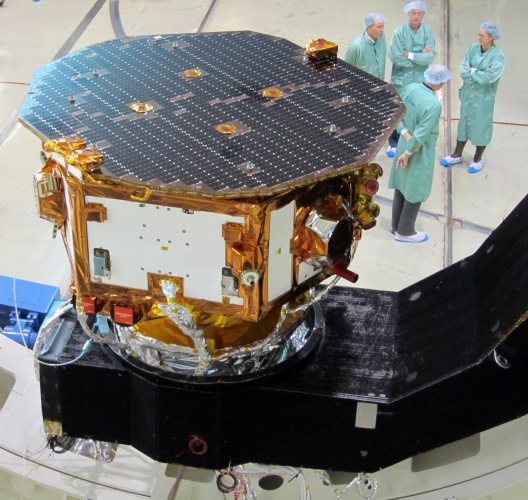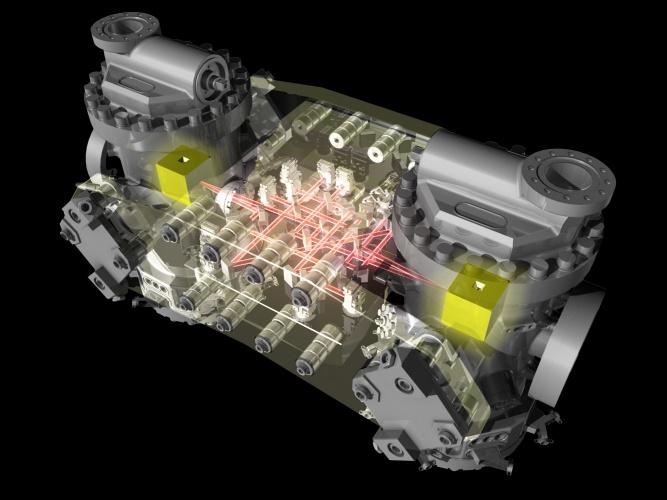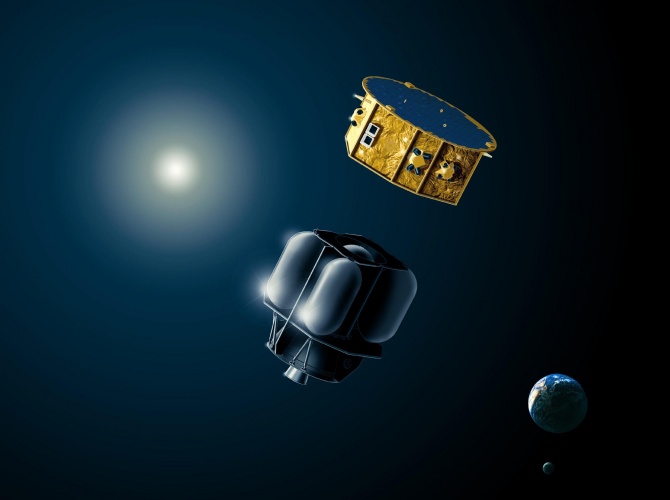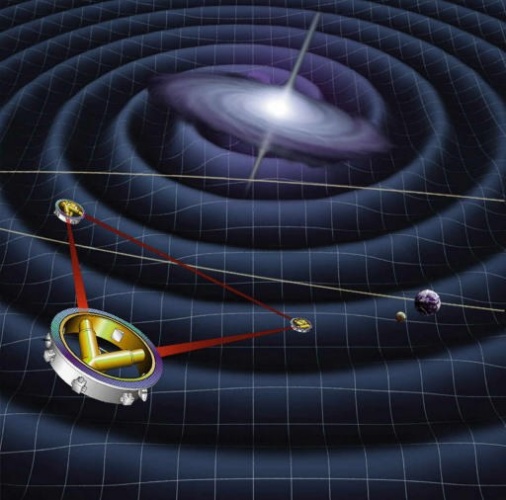A week ago I was standing in a cleanroom with a spacecraft that it going to test one of the last parts of Einstein’s theory of special relativity that remains unconfirmed. A century after the great theoretician made his predictions about the nature of the universe and the forces that shape it, we might finally come closer to an understanding of gravity and how it can affect objects many millions of miles away.
One of the notable things about visiting spacecraft manufacturers is that the sense of wonder about what engineering can achieve is so evident. Even among people who spend their days working on spacecraft systems, and for whom this is normal, visibly stop and go misty-eyed when they talk about their work. Seeing a seasoned space engineer gaze at the half-tonne of precision engineering dangling off an overhead crane as it is hoisted onto its propulsion unit and describe it as ‘the most exquisite thing’ as though it were some delicate filigree of jewellery is something that you’re unlikely to encounter in any other branch of engineering.

The spacecraft in question is called LISA Pathfinder, and in common with jewellery, it will contain a significant quantity of precious metal when it blasts off from ESA’s spaceport in Equatorial Guinea in September. It’s not a mission in and of itself; as the name implies, it’s a trailblazer, designed to test the equipment for a larger mission, LISA, which hopes to detect gravity waves: the deformation in the fabric of space-time which Einstein predicted would occur when massive objects like black holes collide.
LISA stands for Laser Inteferometric Space Antenna, and the mission itself would see three spacecraft sent out to a point in space where no net gravitational fields can act on them. Their vital piece of equipment is an ‘optical bench’, made out of an alloy called Zerodur which barely expands or contracts when its temperature changes — it’s often used to make telescope mirrors — on which are mounted two vacuum vessels each containing a 4.5cm cube of platinum-gold alloy. The distance between these cubes, which during the mission will float free in the weightless environment inside their vessels, will be constantly monitored by a complicated series of lasers within the vessel; in LISA this system will also monitor the distance between the three spacecraft. A passing gravity wave will change this distance, giving a measurement which is not possible to detect on Earth because of the tiny difference in gravity compared with the planet’s own gravitational field.

This system of floating cubes and the laser that monitors them is one of the technologies that is to be tested on LISA Pathfinder, along with the thrusters and associated systems that will allow the spacecraft’s position to be held with the precision necessary to achieve its goal. The spacecraft is use the thruster plarform onto which it was mounted in Stevenage to fly 1.5million km to the First Libration Point (L1), a position in space where the gravity of the Earth, Sun and Moon cancel each other out. The only external force acting on it there will be the radiation pressure from the Sun, explained system engineer David Wealthy; this will tend to push down on the satellite’s solar panel with an infinitesimal force. Nonetheless, this will seem to make the free-floating gold-platinum masses drift towards the edge of their vessels nearest to the solar panel. The spacecraft will then use its thrusters, which produce very tiny amounts of thrust by squirting out cold nitrogen, to move the craft so that one of the masses moves towards the centre of the vessel. The other mass will be moved within its vessel by electromagnetic fields (so the spacecraft flies around one mass which floats freely, while the other mass is controlled). The laser interferometer on board measures the distance between the two masses.
‘What we want to see is absolutely no relative movement,’ said Wealthy. ‘We need these satellites to be platforms that are as quiet as possible.’ The interferometer on Pathfinder must measure a distance of about 35cm, while on the LISA mission itself the distances between the three spacecraft will be up to 5million kilometres; even then the gravitational disturbances expected are so feeble that they should only change the relative distances slightly. Each craft will carry two masses so that movement caused by micrometeorites, for example, can be detected and ruled out from being caused by gravity fluctuations. So, in one of the slight paradoxes which you tend to see in space science, a successful mission will be one where the readings from the essential system don’t change at all.

This is the first mission to be led industrially from the UK since the Giotto probe that flew by Halley’s Comet in 1986, and is therefore hugely significant for Airbus Space and Defence in Stevenage, which built the probe. The facility is currently building two other space satellites, Solar Orbiter which will investigate the physics of the Sun, and ADM-Aeolus which will track the Earth’s winds, and will soon open a new cleanroom where the ExoMars rover will be built: another industrial lead project for the UK.
‘The new things on the probe are essentially the precision with which we will measure distances and control the spacecraft,’ explained project manager and chief engineer for LISA Pathfinder, Cesar Garcia. The position of the blocks must be influenced only by the curve of space-time itself; which means the vacuum inside their vessels must be perfect and no system on the spacecraft can cause any ‘noise’ which might interfere with measurement. ‘It’s that degree of precision, controlling the position of the craft around the mass, which we will use to fly the three craft in LISA itself, and that’s what is most likely to have further space applications in future,’ he said. As for the confirmation of Einstein’s theory, Garcia has no idea what implications it might have, but is sure it will be significant. ‘After all, special relativity is essential for making sure that global positioning systems work, because the clocks on GPS satellites are moving and that affects the way they experience time. That, in turn, affects millions of people in their everyday lives, and we had no idea it would have any application for decades after Einstein predicted it. I’m confident that we’ll find a use for this aspect of gravity: we always do find uses for fundamental physics.’

LISA itself is not certain to go ahead; it depends partly on the result of the Pathfinder mission, and partly on the issues of politics and finance that always affect space science missions. It’s tentatively scheduled for about 2025-2030, so only a few of the Pathfinder team expect to work on it. But this is another aspect of space engineering shared perhaps only with nuclear fusion: it’s forced to always plan on a very long scale, and with international collaboration as a necessity. But pushing the boundaries of science by necessity pushes the boundaries of engineering, so what we spend on going to space to do science has direct effects on Earth.




April 1886: the Brunkebergs tunnel
First ever example of a ground source heat pump?